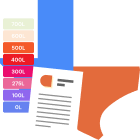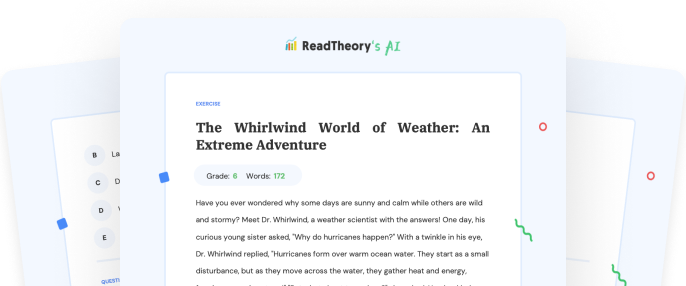Transform Your Teaching
with AI-Powered Worksheets
With ReadTheory’s Instant Worksheet Builder, you can create engaging, grade-appropriate worksheets tailored to your students in minutes. Spark curiosity, save time, and empower critical thinking with AI-powered tools designed for teachers like you.


Electron Transport Chain: Powerhouse of the Cell
Just like how cars need fuel to move, our bodies need energy to function. This energy comes from a tiny organelle within our cells called the mitochondrion, occasionally referred to as the 'powerhouse of the cell.' But, how does this tiny biological entity create energy so crucial to our survival? The answer lies in a complex process known as the 'electron transport chain.' Picture this process as a relay race taking place within the inner membrane of the mitochondrion. The runners, in this case, are electrons, and they pass through four proteins, each a relay station in this race. These electrons are introduced to the race by molecules known as NADH and FADH2, which are produced during earlier stages of cellular respiration. As the race progresses, the electrons move from one protein to another, each time losing a bit of energy. This energy is used to pump protons across the membrane, creating a flow of charged particles similar to a battery. Finally, the electrons combine with oxygen (the finish line) to form water, a harmless product. But what about the energy produced? This is where the last player, ATP synthase, comes into play. The flow of protons back through ATP synthase provides the energy to convert ADP into ATP, the main energy currency of our cells. So, in essence, the electron transport chain is a process that takes the energy from food and transforms it into a form that our bodies can use, not unlike how a car engine converts fuel into motion.
Question 1
What organelle provides energy to our cells?
Nucleus
Vacuole
Lysosome
Mitochondrion
Golgi apparatus
Question 2
What is the function of molecules NADH and FADH2 in electron transport chain?
They act as protons
They introduce electrons to the race
They form water
They convert ADP into ATP
They act as proteins
Question 3
What is the role of ATP synthase in the electron transport chain?
It forms water
It introduces electrons
It moves protons across the membrane
It converts ADP into ATP
It acts as a protein
Question 4
Where does the electron transport chain process take place?
In the nucleus
In the vacuole
In the lysosome
In the inner membrane of the mitochondrion
In the Golgi apparatus
Question 5
What happens to the electrons as they move from one protein to another in the electron transport chain?
They combine with oxygen to form water
They move protons across the membrane
They lose a bit of energy
They convert ADP into ATP
They act as proteins
 or share via
or share via

Assign the ReadTheory pretest to determine students' reading levels.

Why Teachers Love
Instant Worksheet Builder?

Tailored Content for Every Student
Craft worksheets with passages and multiple-choice questions customized to your chosen topic and grade level, ensuring relevance and engagement.

Save Hours
of Prep Time
Our AI, Lexi, generates complete worksheets—passages, questions, and answers—in minutes, freeing you to focus on teaching, not planning.

Standards-Aligned Learning
Every worksheet is designed to boost reading comprehension and critical thinking, aligning seamlessly with State Standards to help your students shine.
Personalized teaching
for personalized learning
Browse worksheets created and refined by educators using Lexi—your source for inspiration and ready-to-use resources.


ReadTheory is free for Teachers to use.
Join thousands of educators using ReadTheory for free. Sign up today and start creating in just minutes!





